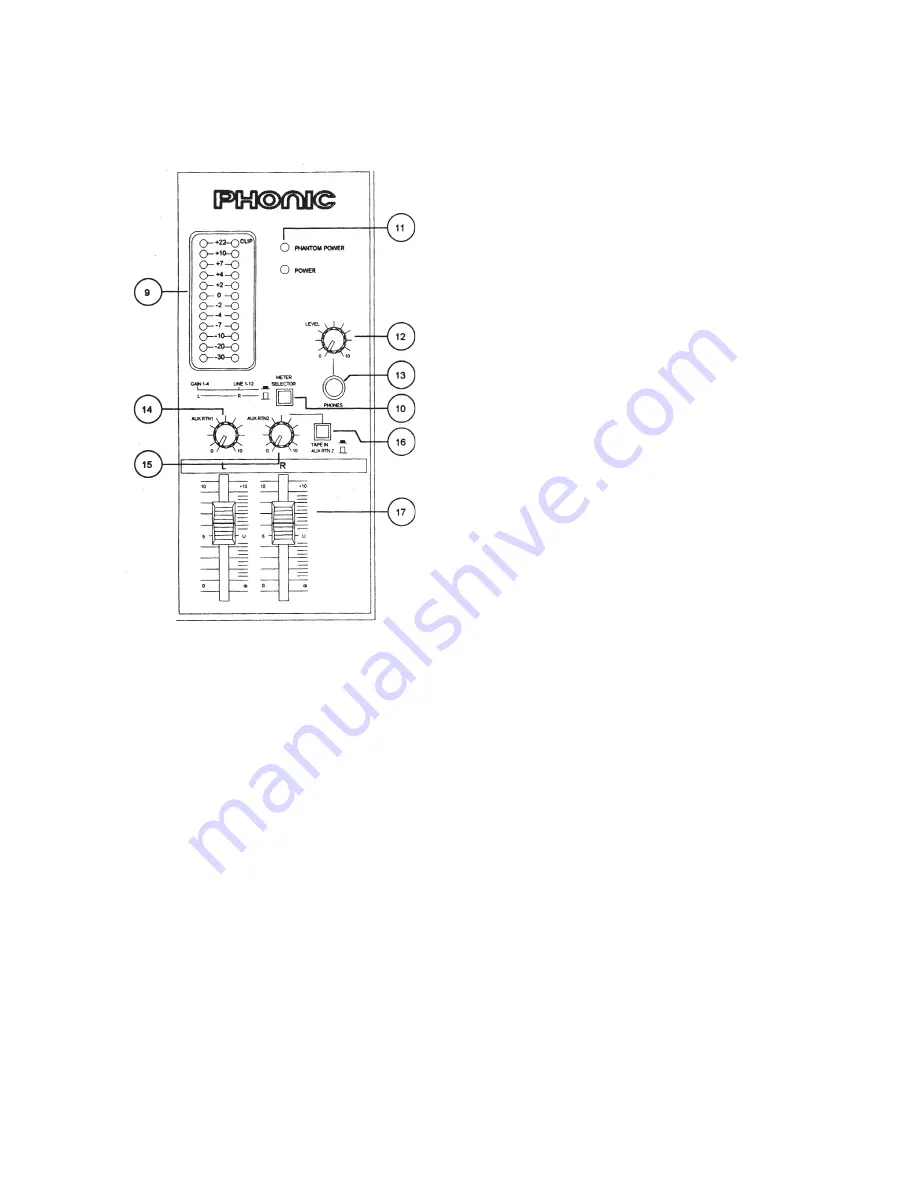
#
9. LED ladder meter
A visual representation of mixer levels is
essential. Not only does it help you set up the
input levels, but it helps avoid overloading the
main outputs and causing distortion of your
sound. The standard display is the levels of the
left and right main outputs.
10. Meter selector switch
To set the input gain levels, first activate the
channel metering with the meter selector switch
(10). Reduce all the channel faders to minus
infinity. The scales then show the mic levels on
the left (XLR inputs) and the line levels on the
right. Plug in the device (instrument, mic, etc.)
and set the main fader to the unity position. Play
the input device at the sort of level it will be used,
then simply adjust the trim control until the level
on the appropriate side of the scale peaks
around 0.
This channel is now set-up. Remember that
if you change the input device or modify its
output settings, you will need to readjust the
trim.
For the two stereo channels without trim
controls, adjust the output gain of the input
device to its highest setting. If you have some
old gear with a low output, remember that
channel 5-6 and 7-8 have trim. It may be pos-
sible to switch things around to get the best
results. The extra gain on the fader is avail-
able if the input is still too quiet.
11. Power/Phantom Power LEDs
These are a front panel indication of whether
the power and phantom power supplies are
on. The switches are located on the back of
the unit (see 27 and 28).
12. Headphone level
This knob controls the level of the headphone
output.
13. Phones Jack
This is the place to plug in your headphones.
The headphone output plays the same
material as the L R main outputs. The output
may also be connected to an amp and
speakers for control room mixing.
14. AUX return 1
Think of this as an extra stereo input chan-
nel without all the extras. AUX returns can
be used for instruments if necessary, but are
typically for returning the AUX send mixes to
the L-R main mix.
15. AUX return 2
This is the same as the first AUX return, but
has one extra feature (see 16 & 24).
16. Tape in switch
When this switch is pushed, the input to the
AUX return 2 1/4" jacks is replaced by the
input of the tape-in jacks (see 24).
MASTER SECTION
All manuals and user guides at all-guides.com
all-guides.com






































